I recently experienced a little setback: I fractured my toe (one in from the pinkie on the right foot). I didn’t teeter as I tried on Loubou’s or tumble on a treacherous chunk of pavement. Nor was I hang-gliding or training for a 5k run. Please. Have we met? No, in typical femme fatale fashion, à la Mae West, I tripped over a pile of men.
Of course I don’t mind being ordered by doctors to rest and relax. In fact, I relish the opportunity. And if ever there were a time to be waited on hand and foot, bark out orders and be completely catered to, honey this is it! I’m also grateful that the toe (underrated little body part that it is) wasn’t broken or more severely damaged – it should heal nicely as long as I’m patient.
But the thing I really miss is going to yoga. Feeling a little blue and kicking myself (pun intended) for not being more careful, I called my friend Anne who pointed out that what’s bad in life is good on the page. She suggested that as I recuperate I commiserate with noir characters – like nostril-impaired Jake Gittes (Jack Nicholson) in “Chinatown” – who sustain and recover from injuries. (You can always trust a Gemini to come up with a creative approach.)
As I lounge on my sofa, I also find myself pondering existential questions, such as: Can I now fulfill my long-held fantasy of going to yoga and resting in child’s pose for the entire class? Will wine and ice cream provide the same benefits as shavasana? What about cupcakes? Does Susie Cakes deliver? Is it possible to dance while using crutches? How long can a girl go without shaving her legs?
Aah, more than my peabrain can process right now. So, with many thanks to Anne, here are my favorite mending moments of film noir.
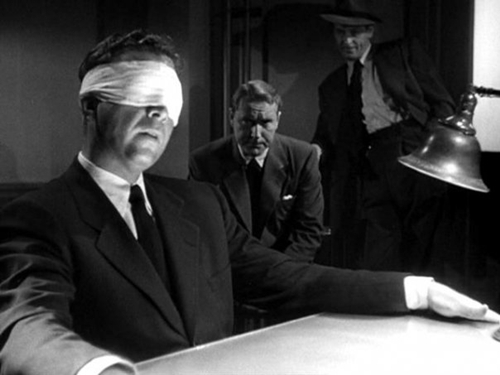 Dick Powell as Philip Marlowe is temporarily blinded in “Murder, My Sweet.”
Dick Powell as Philip Marlowe is temporarily blinded in “Murder, My Sweet.”
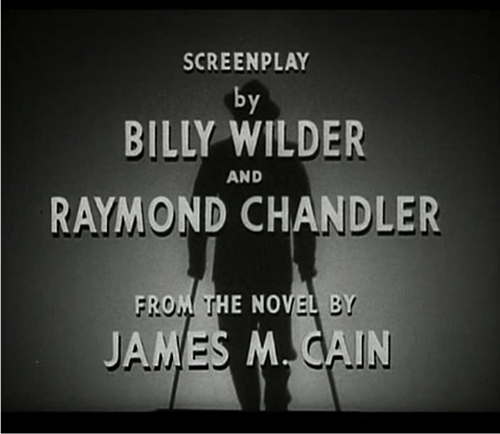 Phony, schmony. The dude still hobbled around on crutches: Fred MacMurray in “Double Indemnity.”
Phony, schmony. The dude still hobbled around on crutches: Fred MacMurray in “Double Indemnity.”
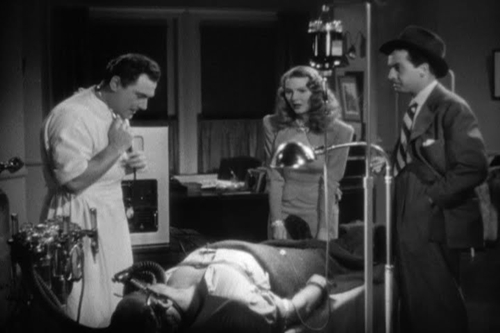 “Decoy”’s Frank Armstrong recovers from the ultimate “accident.” Cold-hearted Jean Gillie sees a way to get her hands on a wad of cash by bringing her criminal boyfriend back to life following his visit to the gas chamber. Absurd? Absolutely. Still, it’s all in a day’s work for film noir’s toughest femme fatale.
“Decoy”’s Frank Armstrong recovers from the ultimate “accident.” Cold-hearted Jean Gillie sees a way to get her hands on a wad of cash by bringing her criminal boyfriend back to life following his visit to the gas chamber. Absurd? Absolutely. Still, it’s all in a day’s work for film noir’s toughest femme fatale.
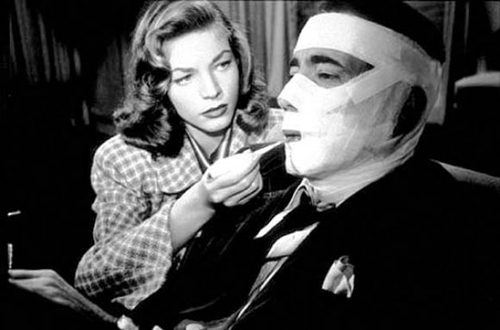 “Dark Passage”: Unjustly sentenced prison escapee Humphrey Bogart undergoes plastic surgery to alter his looks. He co-stars with real-life wife Lauren Bacall.
“Dark Passage”: Unjustly sentenced prison escapee Humphrey Bogart undergoes plastic surgery to alter his looks. He co-stars with real-life wife Lauren Bacall.
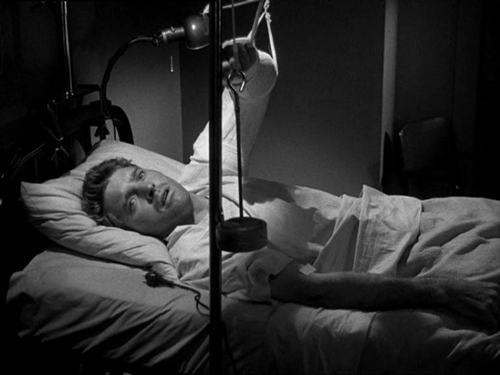 Burt Lancaster sustains major injuries after a heist gets fouled up in “Criss Cross.” (In “The Killers” Lancaster plays a boxer whose career folded after hurting his hand.)
Burt Lancaster sustains major injuries after a heist gets fouled up in “Criss Cross.” (In “The Killers” Lancaster plays a boxer whose career folded after hurting his hand.)
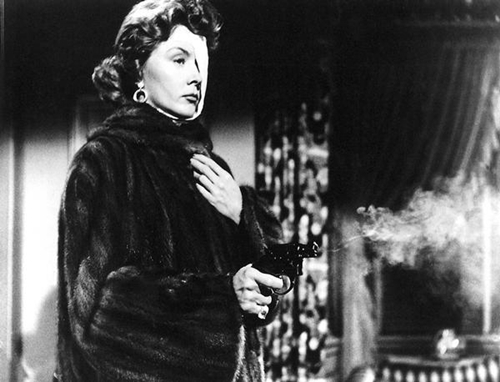 “The Big Heat” contains one of film noir’s most famous violent scenes. Lee Marvin throws a pot of boiling coffee at Gloria Grahame and disfigures her face. She gets even in the end.
“The Big Heat” contains one of film noir’s most famous violent scenes. Lee Marvin throws a pot of boiling coffee at Gloria Grahame and disfigures her face. She gets even in the end.
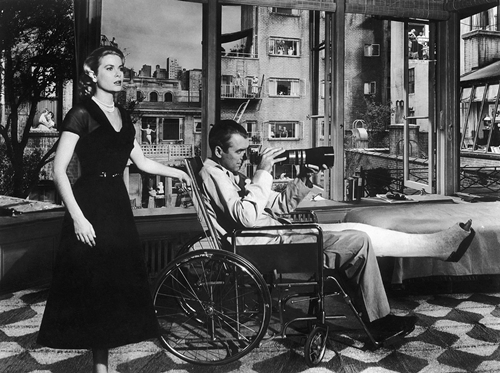 Jimmy Stewart is a photojournalist who watches his neighbors to pass the time (with gorgeous Grace Kelly for company) while his leg heals in “Rear Window.”
Jimmy Stewart is a photojournalist who watches his neighbors to pass the time (with gorgeous Grace Kelly for company) while his leg heals in “Rear Window.”
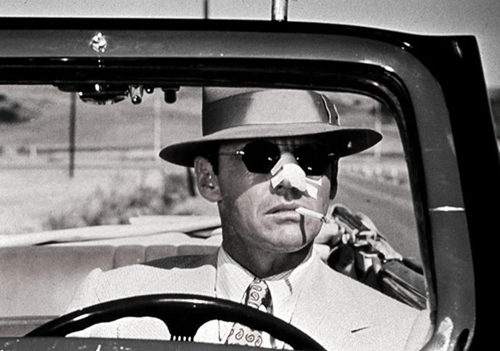 Jack Nicholson wears his bandage for most of “Chinatown.” Director Roman Polanski plays the menacing punk who cuts Nicholson’s nose.
Jack Nicholson wears his bandage for most of “Chinatown.” Director Roman Polanski plays the menacing punk who cuts Nicholson’s nose.
 “Misery”’s Kathy Bates is the nurse-from-hell to wounded writer James Caan.
“Misery”’s Kathy Bates is the nurse-from-hell to wounded writer James Caan.
![251[1]](http://www.filmnoirblonde.com/wp-content/uploads/2012/08/2511.jpg) Viggo Mortensen gets stabbed in his foot after fending off two thugs in “A History of Violence.”
Viggo Mortensen gets stabbed in his foot after fending off two thugs in “A History of Violence.”
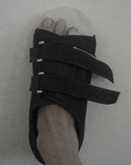





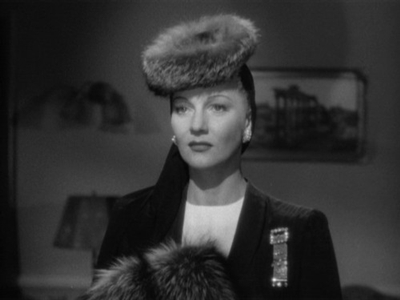
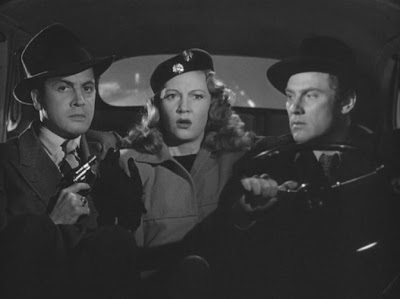
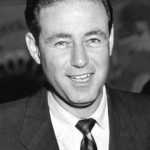
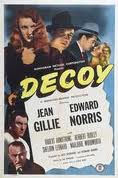
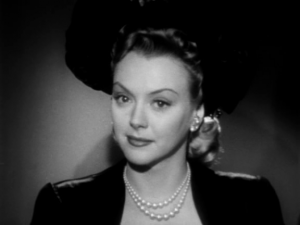
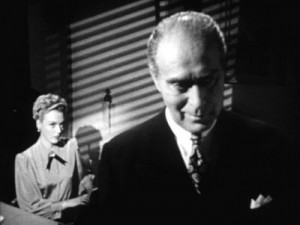
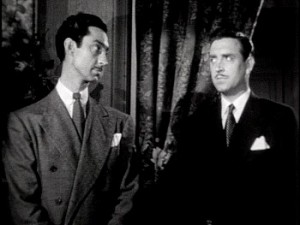





From FNB readers